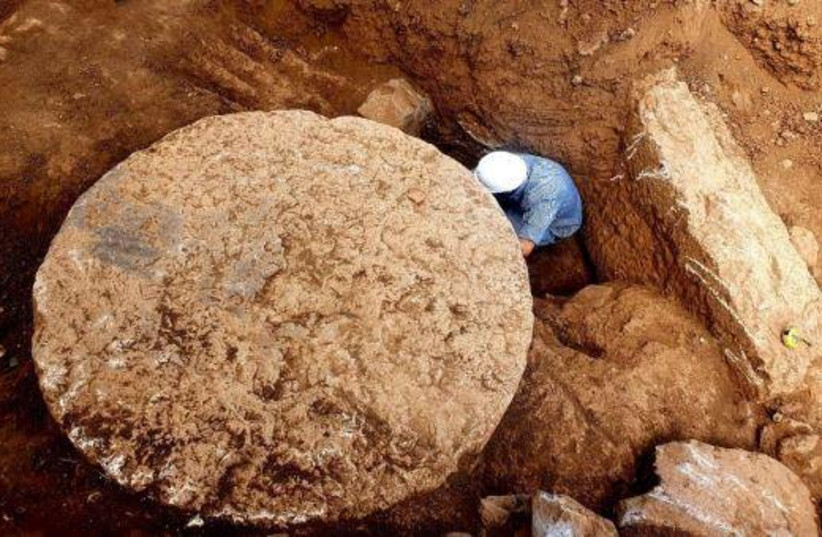Archaeologists in Israel discovered the base of a massive Roman column at the foot of Mount Hermon in the North, according to the Israel Antiquities Authority.
The column was discovered near Ein Kuniya, a Druze locality near Mount Hermon, during a salvage excavation done by the IAA to prepare for the construction of a school on the site.
The column base is enormous. Though only the base itself is present, the researchers can already tell that it was something out of the ordinary.
The Roman column near the Hermon in Israel: An archaeological mystery
Where it was made and what it was used for remain a mystery, but archaeologists have been able to figure out some things.

For example, we can infer a bit about the column's origins based on its composition. While it is impossible to say where the column itself is from, it was definitely not built and carved on the spot.
The IAA experts could infer this thanks to the column's material: Limestone, unlike the area's local stone, basalt.
Another unknown is what the column was used for.
Often, columns would be used to help support homes and residences or public buildings around this period. However, this column has different dimensions, so it likely served a different function, like serving as a support column for a bigger, more important structure.
Supporting this is the fact that near the column base are remains of walls, which link these finds to other excavations done nearby in previous years.
These excavations revealed the remains of a Roman-era building and an aqueduct that supplied it with water.
Inside this building were flowers, a clay candle and ancient tools that had been imported, and the archaeologists believe the column could be related to these finds.
What was this Roman-era building?
Most likely, it was either a flour mill or another agricultural facility that operated under Roman rule, but it is important to underline just how large this column likely was, and what that could imply.
According to excavation director Tzviki Badihi, the biggest columns that this one could be compared to are located in the Banyas Spring Nature Reserve, also near Mount Hermon, which once housed an ancient city known as Caesarea Philippi.
"The ancient city that was located there served as the capital of the area and housed the region's administrative center," Badihi said.
But any further details about this column remain a mystery.
